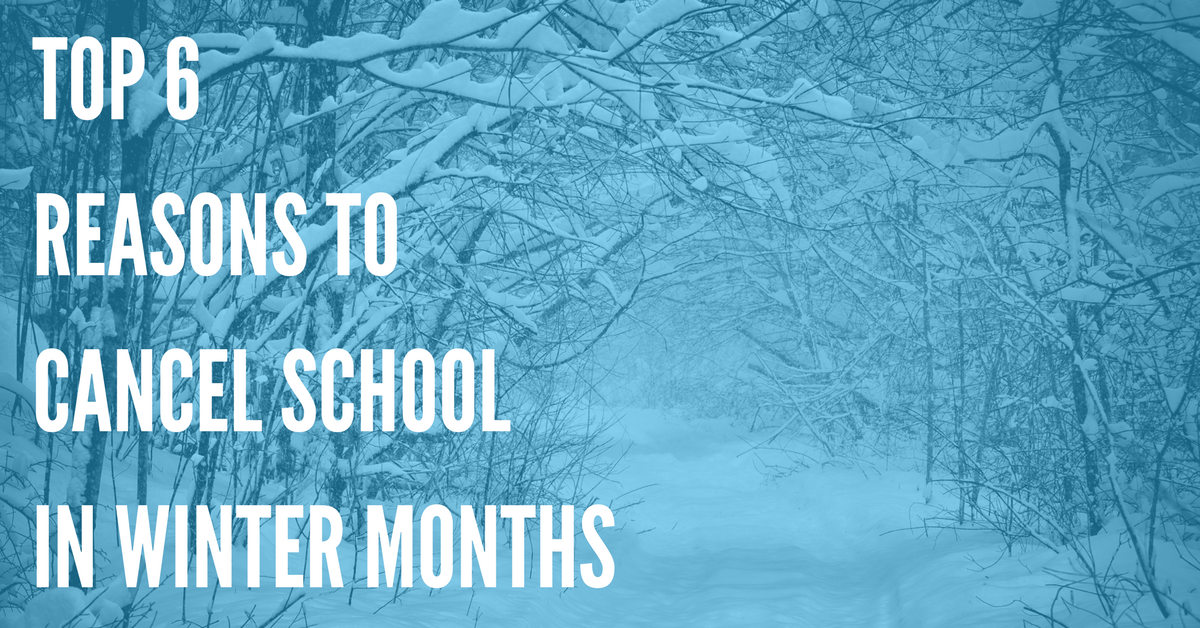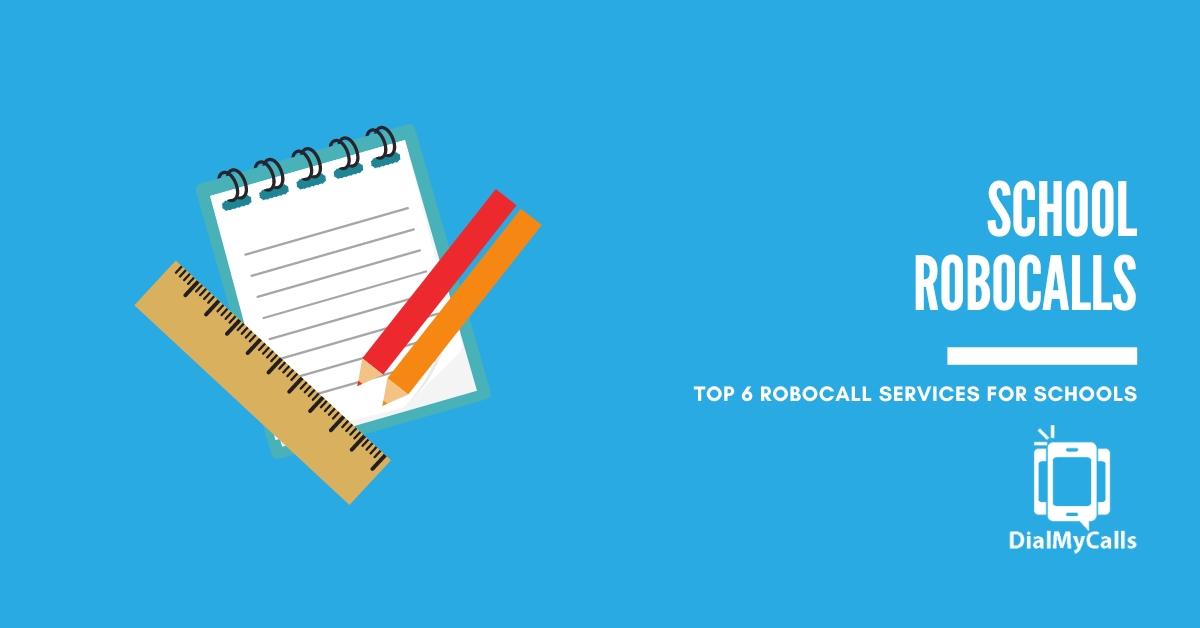The Top 6 Signs Administrators May Need to Cancel School in the Winter
Posted by Tim Smith in Schools on April 6, 2018
Updated on August 10, 2022

In the winter, school administrators often have to cancel school for inclement weather. Snow, ice, and extreme temperatures can mean that it’s simply not safe to have children come to school.
But it’s often hard to tell whether or not you should cancel school in the winter, and decisions to cancel school can be controversial. This is because snow days are often made up by shortening summer or spring breaks.
So how can you tell when you’ve got a real emergency on your hands, and when is it okay for your student to brave the wintry weather? Find out with this handy guide from DialMyCalls.

1. A Snow Emergency Has Been Called by the Government
This is a no-brainer. If a snow emergency has been called by the local municipal government, you should delay the opening of your school until roads are clear, or consider canceling classes altogether. Commonly, there are 3 levels of snow emergency:
- Level 1 Snow Emergency – Drifting, blowing snow is making roads hazardous, and roads may be icy. Caution is encouraged while driving. You may want to delay the opening of your school until the roads are clear.
- Level 2 Snow Emergency – Significant snowfall and very icy roads make driving dangerous. You should consider canceling classes at your school.
- Level 3 Snow Emergency – Roads are closed to all non-emergency personnel. Nobody should be driving except for emergencies or other essential travel purposes. Holding school is impossible.
These levels vary between local and state governments. Pay attention to the snow emergency level, and use it as a guide when deciding whether or not to cancel classes.

2. There Is an Abnormal Amount of Snowfall for Your Region
A four-inch snowfall in the Upper Peninsula of Michigan, or in Vermont is just another day. Communities in cold climates have a robust plowing infrastructure, and are able to clear snow quickly even in emergency conditions.
However, the same is not true of all climates. Even just a single inch of snow in a state like North Carolina, for example, can cripple transportation infrastructure – there are simply not enough plows to take care of snow removal.
This is a major consideration that you should take into account. If snowfall is abnormally high for your region – even if it is not a lot – you may want to consider canceling classes. It’s better to be safe than sorry.

3. Temperatures Are Very Low
Snow and ice are not the only problems facing students, parents, and bus drivers. Extremely low temperatures (below 0 degrees Fahrenheit with wind chill) can make the outdoors very dangerous.
Young children are more prone to hypothermia and frostbite than adults are. Even waiting outside for a bus for just a few minutes without being properly dressed can cause serious health issues.
If the roads are clear, but temperatures are expected to be very low, you may want to consider canceling school, or delaying school openings until later in the day, when temperatures have risen somewhat.

4. Roads Near Your School Have Not yet Been Plowed
In a winter emergency, snow plows begin by prioritizing highways. Then, they will begin plowing arterial streets and other large connecting roads. Their final priority is the clearing of residential streets.
Depending on the location of your school, many of the roads around it might not be plowed at all. If this is the case, you should probably think about canceling school until municipal authorities are able to clear the way for buses and cars.

5. Sleet or Ice Is Making Roads Unsafe
“Wintry mix” and sleet are extremely dangerous for drivers. If the temperature is above freezing, sleet and freezing rain are very hazardous. Sleet and freezing rain can quickly turn into invisible black ice on roadways, making driving very dangerous.
Even if you have not experienced significant snowfall, sleet and freezing rain may require you to cancel school. Sleet causes very slippery roads, and freezing rain can reduce visibility by quite a bit, leading to accidents and delays on major roadways.

6. Heavy Or “Wet” Snow Is Continuing To Fall
Not all snow is equally dangerous. In very low temperatures, “dry” snow is common. This snow does not melt, and is usually quite powdery and blows around quite a bit.
However, as temperatures climb near the freezing point, “wet” snow is more common. This snow contains more moisture than “dry” snow, and is much heavier as a result. It can pile up on power lines, causing electrical outages, and it’s also much more likely to cause an ice layer to accumulate on roadways.
Powdery snow is typically less dangerous to drive on, and can be removed easily. Wet snow, on the other hand, is much harder to plow and remove, and the ice that results from melting snow can be very hazardous.
If the temperature is near 32 degrees Fahrenheit, and snow is falling constantly throughout the morning, you should definitely cancel classes.
Use DialMyCalls to Notify Students and Parents of School Closings – and Keep Them Safe!
When you do cancel classes, it’s important to make sure that all parents and students are aware of the closing. You don’t want them to put themselves at risk by driving to school when they don’t have to!
Email is a good way to do this, but not everyone checks their email every morning. You need a dedicated emergency alert system, such as DialMyCalls.
With DialMyCalls, you can create lists of different contact groups – such as students, staff, teachers, and parents. Then, with a single push of a button, you can send out SMS alerts and voice messages alerting them to school closures, and informing them what they should do.
You can also create a school closure hotline. You can set up a number through DialMyCalls to tell parents whether or not school is closed or delayed, and what’s expected of them.
Sign Up For A Free Trial Today!
Get Started
Recent Posts
Categories
“I am a youth minister and have spent hours in the past calling students individually to remind them of an upcoming event or to get out an urgent announcement. With DialMyCalls.com, I cut that time down to about 1 minute. I also love how I can see exactly who answered live and how long they listened so I know if they heard the whole message. DialMyCalls.com is the best website I have stumbled upon all year! Thanks!”
Central Baptist Church
Sign Up For A Free Trial Today!
Get Started
Sign Up For A Free Trial Today!
Get Started
Recent Posts
Categories
“I am a youth minister and have spent hours in the past calling students individually to remind them of an upcoming event or to get out an urgent announcement. With DialMyCalls.com, I cut that time down to about 1 minute. I also love how I can see exactly who answered live and how long they listened so I know if they heard the whole message. DialMyCalls.com is the best website I have stumbled upon all year! Thanks!”
Central Baptist Church
Sign Up For A Free Trial Today!
Get Started


